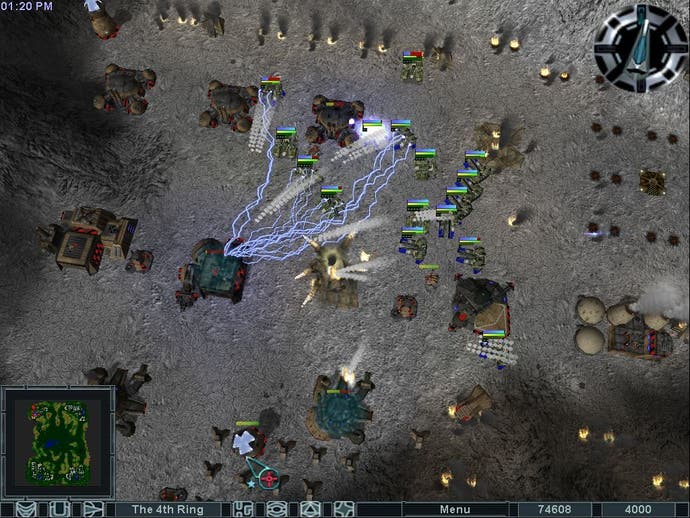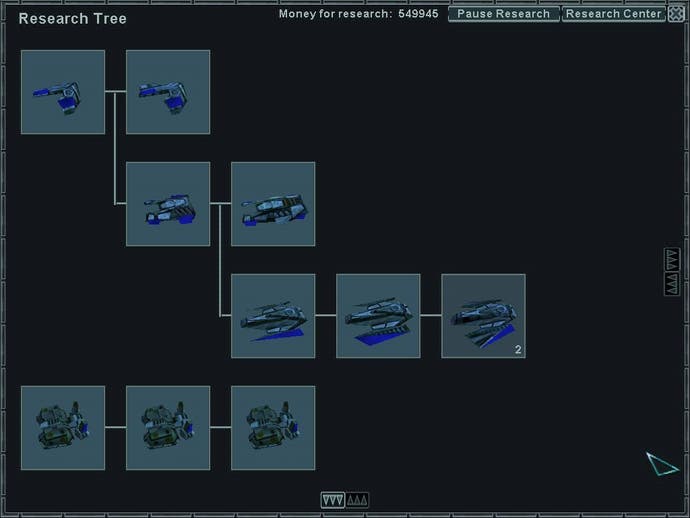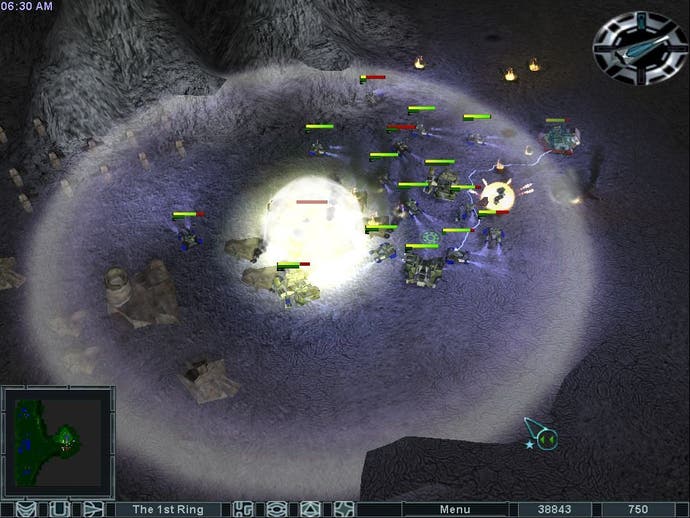The Moon Project
Review - EuroGamer flies you to the moon for a look at this semi-sequel to 3D strategy game Earth 2150
The Moon Project has had something of a troubled history. Developers TopWare Interactive filed for insolvency in February, just weeks after releasing the game in their native Germany, and then US / UK distributor Mattel Interactive was taken over by France's UbiSoft. But we've finally got our hands on review code and the game should be available here in the UK within the next month. So the question is, was it all worth the wait for English-speaking countries?

Man On The Moon
Rather than being a full sequel, The Moon Project recycles the game engine and many of its units and buildings from Earth 2150, adding new technologies and new campaigns for each of the factions. The storyline runs alongside that of the original game rather than continuing it, with the Lunar Corporation working on a top secret military project. If you choose to help them you will be supporting their research effort and protecting Project Sunlight, while as the United Civilized States you must uncover what's going on up there and put an end to it before the weapon becomes operational. Quite how the Eurasian Dynasty fits into all this isn't clear - there is a campaign for them, but from what we played it didn't seem to be connected to the rest of the game.
Most of the action takes place on the lunar surface though, a new setting for Earth 2150 with some visually impressive but distinctly colourless craters and mountain ranges to fight over. Unfortunately one thing the moon lacks is atmosphere, although Topware seem to be blissfully ignorant of conditions there. As a result, apart from the lack of weather, colour and plants you won't notice any real difference between the moon and the Earth below. Clouds of smoke drift lazily out of factory chimneys into the vacuum and are blown away by the non-existent wind, lighting conditions cycle every twenty four hours, and gravity seems to be exactly the same as well. Go to the back of the class.

Sound And Vision
Topware have also chosen to ignore (or simply forgotten) the fact that in space nobody can hear you scream, which is undoubtedly a good thing. After all, battles would be pretty tame without the fizzing of electro-cannons and the thundering explosions of rockets.
Scientific inaccuracies aside, the moon still tends to be a rather dull and monotonous place thanks to the uniformly grey terrain, which is something of a waste of the game's stunning 3D graphics and easy-to-use free-roaming camera. Flashy weapons and new effects like meteor showers and earthquakes help add some visual stimulation, but all of this comes at a cost. Even on a Pentium III 600 with 192Mb of memory and a GeForce 2 graphics card things slow down during large battles, and you will probably have to live without some of the graphical bells and whistles if you want to maintain a decent frame rate. Luckily there is a plentiful array of options to tweak if you find your system lacking in grunt.
On the musical side of things there are seperate soundtracks for each of the three factions which fit their character perfectly, from the bombastic Eurasian Dynasty orchestral pieces to the grinding breakbeats and distorted guitars of the UCS. The music is also context-sensitive, with spooky night-time tracks giving way to rousing battle themes as your units stumble into an enemy base in the darkness. In total there is over an hour of music, all conveniently stored in WinAMP-friendly MP2 format. In fact, apart from the typically repetitive unit acknowledgement voices, the only real downside to the game's audio is that it just isn't loud enough. Even after setting all the in-game options to maximum I still had to crank up my amplifier to almost double the volume I usually use. Maybe Topware did remember that sound doesn't carry in a vacuum after all...

Continuity
This being a real-time strategy game, you might be expecting the usual succession of base-building, resource gathering, unit production and ass whomping. And you would be right. Like Earth 2150 though, The Moon Project does offer some level of innovation.
The most obvious departure from other strategy games is that you will have a fixed base throughout your campaigns to provide you with new units, research new technologies and allow you to recycle old vehicles. At the end of a mission you can often send any survivors back to your main base to carry over to the next mission, although annoyingly this isn't done automatically, and so you will have to get all of your troops back to the landing site in one piece and load them on to the transporter, shipping them back to your main base fifteen at a time. You can also transfer your cash between the mission and your main base or research center, although again this is cumbersome as you can only transfer a measly 5000 credits at a time with your transporter. Luckily any remaining cash you have on the battlefield at the end of a mission is automatically transferred to your research center.
There is a downside to this though, and that is that it can completely ruin the campaigns if they aren't planned carefully enough. The bad news is that, especially in the case of the new Lunar Corp campaign, the Moon Project isn't very well thought out. As a result you will find yourself with more cash than you can possibly spend and a vast all-conquering army by the end of the game, and the only difficulty comes when you reach a lone-wolf mission which gives you a limited force and doesn't allow any reinforcements or base building. I got away with over half a million credits at the end of one mission half way through the campaign, which was more than enough to research every remaining technology.

Somebody Up There Likes Me
There are other problems with the campaign balance as well, and again it is Lunar Corp that comes out on top. Unlike the other two factions, Lunar Corps constructs buildings in orbit and has them dropped down on to the surface of the moon to order, which is much more convenient than needing vulnerable construction vehicles to do all the work. Lunar Corp don't need to keep their buildings within a certain distance of the nearest power source either, and their construction facility can build all kinds of unit, while the other factions need seperate factories for military and civilian craft.
Lunar Corp also has access to some incredibly powerful weapons right from the start of the game, while the UCS has a heavy mech with a ridiculous number of hit points. The Eurasian Dynasty just doesn't have anything to respond with, especially in the early stages of the campaigns. As a result, the Lunar Corp campaign is almost ludicrously easy as you build up a vast force of electro-cannon wielding tanks, while the UCS campaign is most charitably described as "challenging" and the Eurasian Dynasty missions are simply too hard.
On the bright side, unlike other real-time strategy games, Earth 2150 and The Moon Project allow you to create your own units by combining different chassis types, weapons, shields and equipment that you have researched, producing a vast range of possible vehicles. This adds plenty of variety in terms of both gameplay and graphics, although an annoying bug / feature in the design system means that the computer keeps spitting out random and often pointless designs of its own based on the latest and greatest hardware, and however many times you delete these unwanted designs it just keeps creating more of them. Irritating to say the least.
Conclusion
The Moon Project sadly falls far short of its potential, and no amount of eye candy and dynamic music can save it. The drab lunar landscape which makes up much of the game is a poor substitute for the rich snowfields and forests of Earth 2150, and poorly balanced campaigns make the single player experience less satisfying than it perhaps should have been. The game also seems to have lost something in the translation, as many of the mission briefings and in-game messages sound silly and a few just don't make any sense.
Fans of the original may find enough to like here, especially with the inclusion of an improved map editor and mission scripting language, but is it worth the full-price tag for what is essentially an overblown stand-alone mission pack? Something of a downbeat end for Topware we're sorry to say...
-







